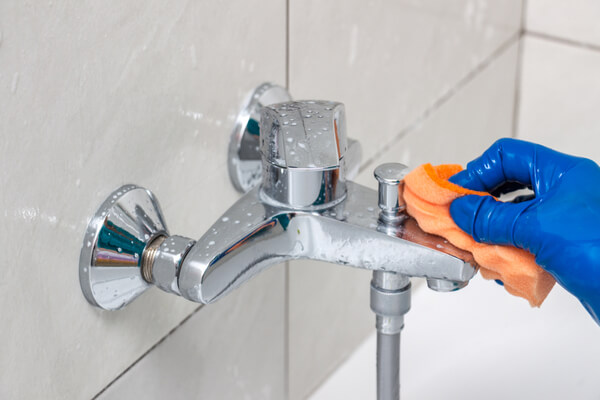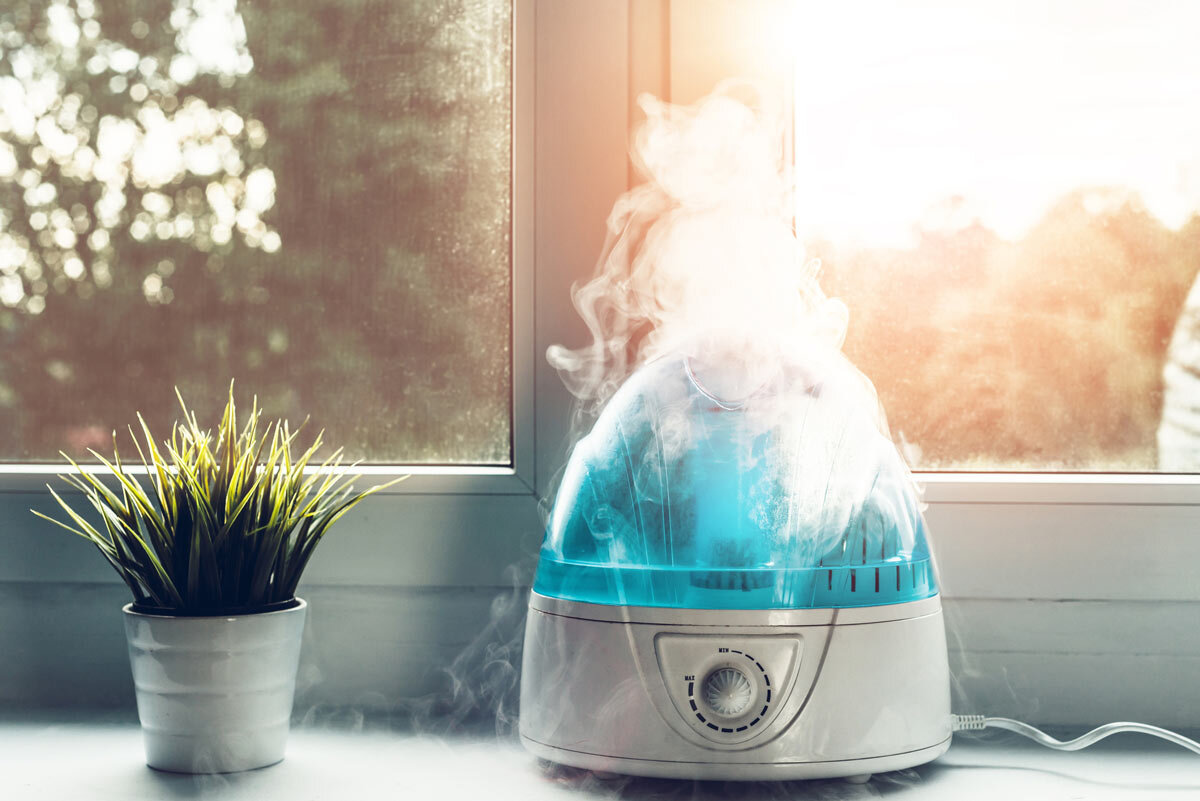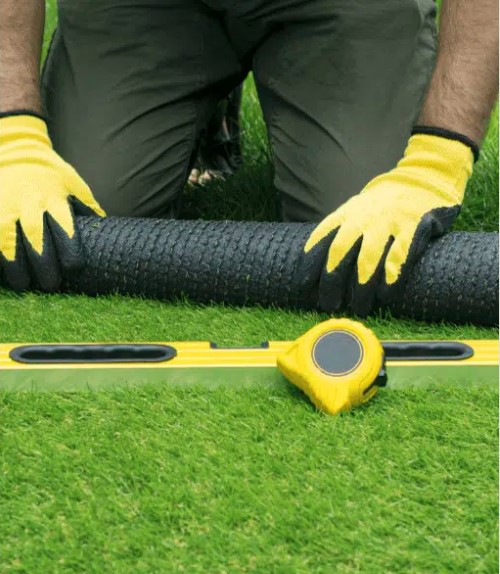How to Use Social Media To Grow Your Business?
Whether you have a brick-and-mortar store or an online business, social media is a great way to connect with your target market and learn more about their likes and dislikes. It’s also a great place to discuss your brand and products because people are more willing to share their stories online than in person.
Content Strategy is the Make-or-Break of Your Social Media Presence
A successful content strategy goes beyond simply writing articles or tweets. It involves actively distributing your content to maximize its reach and visibility. The most effective strategies will also involve networking with other content creators in your niche. In addition, you should include social media share buttons in your blog posts. And, of course, you should respond to audience comments and feedback.
When planning your social media marketing content strategy, it’s vital to set specific goals and measure progress accordingly. Failure to do so will lead to wasted time and poor results. Ideally, you should establish SMART goals, which stand for Specific, Measurable, Attainable, Relevant, and Time-bound. By defining your goals in this way, you’ll be able to focus your efforts on the metrics that matter most to your business.
Developing a content strategy that fits your business’s goals is essential for reaching your audience and generating sales. Fortunately, there are many tools to help you manage your social media content. Buffer, for instance, is an all-in-one social media toolkit.
Creating quality content is time-consuming and requires thought. But if done well, it can make or break your social media presence. With the right strategy, you can build a strong social media presence and increase velocity.
Choosing the Right Social Media
When it comes to choosing the right social media to grow your business, you need to consider a number of factors. For example, you should know your customer base to understand what content they find most engaging. You should also consider your industry and brand values. Not all channels will be useful for your business or align with your brand values, so choose the channels that will make the most sense for your business.
Once you’ve determined your target audience, you can then choose which social media platform is most appropriate for your brand. For example, LinkedIn is aimed at professionals, while Instagram is geared toward direct-to-consumer brands. Some brands use Instagram to showcase their visual or lifestyle-based products, while others create case studies that focus on their products.
Choosing the right social media to grow your company will depend on your target audience and your budget. Facebook, for instance, has the largest audience and the most scope for customization. Other social media platforms, on the other hand, are better for receiving feedback from customers and sharing company information. The best results are achieved with a mix of platforms.
Investing time in social media is an essential part of promoting your business. According to WebStrategies, companies should spend 15 to 25 percent of their total digital marketing budget on social media. However, they should pay close attention to the ROI of their social media campaigns and adjust accordingly.
The Best Way to Cook a Steak
There are many different ways to cook a steak. The most popular method is by searing it. The best way to do this is on a hot cast iron pan. The steak should be cooked for about a minute on each side. Thinner cuts can be cooked at one temperature, while thicker cuts must be cooked at two different temperatures. Medium rare steaks do not require resting.
Searing a Steak
If you’re looking for the most flavorful steak possible, searing it is the best way to cook it. Searing means applying high heat to the steak’s outside, creating a beautiful crust. This technique is often used in combination with indirect heat to brown the steak and cook it to your desired level of doneness. To sear a steak, you’ll first need a heavy-bottomed skillet or a grill pan that’s OVEN-SAFE. Once the steak is seared on one side, transfer it to the oven for about two to five minutes.
Another method is known as the reverse sear. By baking your steak in the oven before you sear it on the pan, you’ll have more control over the internal temperature of the steak and create a beautifully browned crust. You can use this method to cook thick cuts of beef more efficiently and achieve a perfect interior and crust. This method also eliminates the need to rest the steak before cooking it.
Char-grilling a steak
One of the best ways to cook a steak is by chargrilling it. Chargrilling a steak will help preserve the natural flavors of the meat. To achieve the best results, use a charcoal grill with a hot zone and a medium zone. This will help you achieve even cooking and maintain the perfect temperature for your steak.
The ideal temperature to cook a steak depends on its thickness and type. If you want your steak medium-rare, check the internal temperature with a digital meat thermometer. It should register at least a 125-degree internal temperature. If it is rare, move it to a low-heat area of the grill and close the lid for a few minutes. When done, remove it from the grill and let rest for about 5-10 minutes before cutting it.
To avoid overcooking, you should ensure the steak is rested before cooking it on the grill. It should rest for about half its cooking time, so if the steak is 10 minutes long, it should rest for 5 minutes. Afterward, you should bring the steak back to the grill and bring it up to the desired temperature.
Salting a Steak
The timing of salting a steak is crucial. The meat will not get juicy or tender if you salt it too early. Depending on the thickness of the steak, the salt should be added one hour before cooking. When used properly, the salt will draw moisture from the meat, resulting in a juicy steak with a great crust.
When you salt a steak before cooking it, the steak will be tenderized by the salt. It will also help hold moisture in the meat. Since the salt stays near the surface, the heat from the grill will get to it. The salt will also loosen the tough fibers of the steak, which makes the meat more tender.
When you salt a steak before cooking, you should remember to apply it liberally. Use good quality salt. This will ensure that the salt penetrates the steak evenly. If you apply too much salt, it can make the meat cure and prevent a great crust on the outside of the meat.
Searing a Steak with a Leave-in Thermometer
The first step in properly cooking a steak is to use a meat thermometer. Most steaks need to be cooked to a certain internal temperature before they are deemed properly done. Using an instant-read thermometer can help you to determine whether your steak is done or not.
An excellent way to ensure a perfectly done steak is to sear it first. This will create a nice caramelized crust on the outside of the meat. To achieve this, you can use a hot pan and sear the steak for one or two minutes on each side. Another option is to use a blowtorch or kitchen blowtorch.
A searing method is a great way to cook a steak quickly while sealing in the juices. It’s the secret to a juicy steak. To do this, you place the steak in a hot pan and leave it there until the surface is crusted and brown. An old adage states that the primary goal of searing meat is to lock in the juices.
What Lack of Sleep Does to Your Eyes?
Getting less than five hours of sleep every night is bad for your eyes. A good night’s sleep helps the eye function properly, and if you don’t get enough, you might be susceptible to eye spasms. This condition, known as a myokymia, is a common side effect of lack of sleep. Luckily, these spasms are not painful and will not affect your vision.
Ischemic Optic Neuropathy
Lack of sleep can contribute to the development of ischemic optic neuropathy (NA-AION). This is an inflammatory disease of the medium to large blood vessels of the eye, which results in decreased blood flow to the optic nerve. When it occurs, people may experience blurriness or even loss of vision in one eye. Lack of sleep may also result in transient ischemic attacks, which usually occur before ischemic optic neuropathy develops.
An ophthalmologist will perform an eye exam to determine if there is damage to the optic nerve. The ophthalmologist will test the eye by dilating it and looking at the optic nerve. The doctor may also test the visual field and side vision. Blood work may also be necessary to diagnose the condition. This directory can assist you with all problems of your eyes.
Dry Eye
Dry eye patients with poor sleep quality may be more likely to develop more severe symptoms. Insufficient sleep also impairs the quality and quantity of tears. Fortunately, there are some home remedies and medications available that can help manage dry eye at night. Listed below are some of them.
Sleep deprivation may impair the ability of the cornea to repair itself. This can lead to dry eye and other symptoms, such as pain, itching, and blurred vision. In severe cases, this condition may result in blindness or vision loss. Fortunately, most people with a sleep deficiency do not experience these severe conditions. In addition to dry eye, a lack of sleep may also contribute to the onset of puffy eyes, which are common symptoms of poor sleep.
Cataracts
Lack of sleep is a factor that may lead to cataract development. In one study, scientists observed that those with a lack of sleep were more likely to develop cataracts. In another study, a lack of sleep was a factor in the development of nuclear cataracts. However, researchers have not established a causal relationship between cataracts and sleep.
The primary symptoms of cataracts include cloudy or blurred vision. Although cataracts are relatively harmless, advanced cataracts can be harmful to the eyes. They may affect the center of the lens, causing nearsightedness and difficulty with reading. If the cataract progresses, the lens will begin to yellow and cloud, and people may find it hard to distinguish different shades of color.
Central Serous Retinopathy
Central serous retinopathy caused by insufficient sleep can be difficult to diagnose. It may take several visits to the doctor in order to confirm the diagnosis. To diagnose the condition, the doctor will perform a full dilated eye examination on both eyes and will also take retinal images. One type of scan that can help the doctor diagnose central serous retinopathy is called optical coherence tomography (OCT). This type of scan allows the physician to look at the retina at a microscopic level. It can also help identify retinal scarring and minuscule pockets of fluid.
Symptoms of central serous retinopathy can include blurred vision, blind spots, and a lack of focus. This condition can result in loss of vision and could be life-threatening if not treated promptly. This is why early diagnosis is critical. It can also lead to a faster recovery and a lower risk of permanent vision loss.
Dark Circles
Lack of sleep is one of the most common causes of dark circles around the eyes. Sleep deprivation can cause the skin under the eye to become dull, which can accentuate dark circles. In addition, lack of sleep can cause blood vessels to become exposed beneath the skin. Also, your lower eyelids can become swollen and puffy, which can also cause shadows to appear under the eye.
A cold compress can help constrict blood vessels and reduce dark circles. Another effective remedy for puffy eyes is placing cucumber slices on your eyes before bed. Cucumbers have high water content, which can soothe tired eyes. They also contain silica, a mineral essential for the formation of healthy tissue. Tea bags may also help reduce dark circles because they have antioxidant properties and stimulate blood circulation around the eyes.
Bags Under the Eye
One of the most common side effects of sleep deprivation is under-eye bags. This is caused by the blood vessels in your eyelids being dilated from lack of sleep. Since the skin around the eyes is so thin, these dilated blood vessels will appear as dark circles under your eyes.
There are many causes of under-eye puffiness. Lack of sleep, chronic stress, and poor diet can all lead to bags under the eye. Other factors include allergies, thyroid disease, connective tissue disease, and infections. Those with allergies may have more serious problems with bags under the eye.
How to Remove Calcium Build-Up in Pipes
If you’re tired of smelling soapy water from the drain, there are several easy ways to remove calcium buildup in pipes. These methods may require a few tools. For example, you’ll need hydrochloric acid, baking soda, vinegar, and a wire brush or sponge. And make sure to wear gloves.
White Vinegar Dissolves Calcium
Calcium deposits can cause plumbing appliances to run less efficiently, and white vinegar can help eliminate this problem. A white vinegar solution can also dissolve the build-up in shower drains. To do this, close the water valve and pour baking soda and vinegar into the drain. Let the mixture sit for three to four hours to eliminate the calcium build-up.
Calcium, also known as limescale, is easily dissolved by acid. It is not common in copper pipes, as the concentration must be high for it to cause damage. You can also try using a water softening system, which replaces the hard minerals in your water with softer minerals. PEX pipes, short for cross-linked polyethylene, are more resistant to the build-up of limescale than metal pipes.
White vinegar can also be used as a cleaning agent. In a spray bottle, you can use the acid in vinegar to remove calcium buildup. To use it on your pipes, use a cloth or rubber gloves. Also, keep an extra toothbrush handy to wipe off the calcium deposits.
Baking Soda Adds Abrasiveness
Baking soda is an environmentally-friendly cleaner with a wide range of industrial applications. Its mild abrasiveness helps remove grease, soap, and dirt without scratching. Its crystalline structure creates mild alkalinity, transforming fatty acids in dirt and grease into harmless carbon dioxide. It also serves as a leavening agent in baked goods, releasing carbon dioxide gas during baking.
If you’re looking for a homemade solution to remove calcium buildup from pipes, baking soda is an excellent choice. This powder can be diluted with warm water and will slough off the build-up and soften the mineral deposits. You can also use baking soda to clean porous tile and grout.
Another option is to use a mixture of baking soda and vinegar. This mixture can remove calcium deposits from pipes and other surfaces. The vinegar and baking soda mixture should be mixed thoroughly, and you should wear rubber gloves while mixing the solution.
Using a Pipe Snake
Pipe snakes can be a useful tool in cleaning minor clogs in the pipes. This flexible plastic tool is designed to travel down the pipes, breaking down the build-up and increasing water flow. A coil at the end of the snake is used to catch debris and pull it out. The handle is turned counter-clockwise to remove the clogged pipe.
Pipes that are filled with calcium build-up can cause slow-draining fixtures, weak flushing toilets, and poor water pressure in the house. Calcium is the main mineral found in hard water and coats the inside of water pipes and drains, reducing their internal diameter and reducing their efficiency. The build-up can also lower the water pressure in the house and decrease the volume and efficiency of your water heater.
If you notice white deposits on your dishes and fixtures, it is likely that you have a build-up of calcium in your pipes. The amount of build-up will depend on the type of pipes in your home. However, you can remove the calcium build-up using home remedies and drain cleaners.
Cleaning Your Toilet Bowl Prevents the Build-up
Cleaning your toilet bowl regularly will help prevent the buildup of calcium deposits in your pipes. This buildup can cause cloudy water and slow flushing. To avoid this buildup, you should clean your toilet bowl at least once a week. Make sure to clean under the rim of your toilet as well. Leaving calcium in this area can cause your pipes to break down and cause unpleasant odors. Deep cleaning your toilet tank is also beneficial, as it will prevent clogs, thereby ensuring long-lasting pipe performance.
If you do not have a plunger or a plumbing machine, you can also buy a plumbers cloth or pumice stone at a hardware store. To avoid damaging the pipes, avoid using too much pressure while cleaning the bowl. Commercial cleaners are also available and are specially formulated to remove calcium build-up from toilets. However, these cleaners typically contain acid solutions that can be harmful to kids and pets. You should wear gloves if you use these cleaners. Also, remember to let the cleaning solution sit for several minutes before flushing the toilet again. Or you may contact The Plumber Guys, an expert in all plumbing services in the United States.
One of the most common causes of calcium build-up in the pipes is mineral-rich water. This type of water contains calcium and magnesium. Although hard water doesn’t damage the plumbing, the minerals accumulate around the water line in the toilet bowl over time. As they accumulate, they can become stubborn and harder to remove. Luckily, it’s possible to prevent this build-up from forming in your pipes by cleaning your toilet bowl regularly.
The Benefits of a Home Humidifier
Increasing the humidity levels in a room is beneficial for a number of reasons. For example, increased moisture helps to prevent germs from spreading. This is because airborne particles become too heavy to move around. Also, increased humidity helps to prevent dryness of the mouth. Using a home humidifier in your home is an excellent way to ensure that your home air is as humid as possible. More information about home humidifiers on this link>> https://coolaidairconditioning.com/
Reduces Snoring
A home humidifier can help reduce the amount of mucus in the air, which can cause snoring. A humidifier can also reduce the risk of contracting the flu since higher humidity reduces the infectiousness of influenza virus particles. Furthermore, a humidifier can help with coughing, which is more productive when the air is moist. This can prevent the onset of snoring in many cases.
Snoring is a common condition that keeps millions from getting a good night’s sleep. It can also affect the sleep of the snorer’s partner. Lack of sleep can lead to a variety of issues, including difficulty concentrating, heart problems, and even a stroke. However, despite the fact that snoring is common, it is always caused by some other underlying medical problem.
Dry air can irritate the throat and nasal passages, which can lead to snoring. In addition, dry air can also lead to eczema and cracked skin. In addition to these health concerns, snoring can be an affliction for both men and women, particularly women. As a result, the right choice of humidifiers can help people sleep more soundly.
Reduces Allergies
A home humidifier can be an effective remedy for people suffering from allergies. It helps to reduce the inflammation caused by airborne allergens by improving the health of mucus membranes. The humidity in the air increases the cilia in the nasal passageways, allowing them to trap more allergens and throw them out more naturally.
According to a study published by the National Academy of Sciences, dry air can lead to a variety of illnesses. It can also irritate the nasal passages and lead to the occurrence of a sinus infection or eczema. It’s therefore essential to maintain the humidity level in the home to avoid the occurrence of any of these conditions.
Using a home humidifier is also beneficial for people with seasonal allergies. During the winter, the air in the house is often drier due to the heating system. The dry air sucks the moisture out of the air, making it more difficult to breathe. As a result, the humidity level in the air can help those with allergies breathe better and prevent colds or flu.
Reduces Eczema
A home humidifier adds moisture to the air and is a great solution to the drying conditions caused by eczema. This type of appliance can be used all year round and is particularly effective for those with dry skin. For best results, use a humidifier that has a cool mist setting. Heat tends to irritate dry skin and makes redness worse. You can also add chamomile essential oil to the mist to help soothe eczema-prone skin.
If you’re worried about having eczema, try to avoid irritating triggers as much as possible. These triggers include smoking, chemicals, and certain types of clothing. Taking precautions against these triggers will help minimize your eczema flare-ups and reduce your stress.
Using a chamomile bath is another great way to reduce the symptoms of eczema. Chamomile has antibacterial properties that help soothe itchy skin. In addition, it contains a-bisabolol, which is a natural alcohol that reduces inflammation. You can even add chamomile tea to your bath.
Improves Sleep
Using a home humidifier can improve sleep for people of all ages. Besides reducing dry air in the home, it can help people with allergies and asthma. It can also relieve dry throats and nasal cavities, which can cause snoring. Having a humidifier in your bedroom can help you get a better night’s sleep.
The optimal humidity level is 40 to 60 percent, which makes it ideal for sleeping. Artificial cooling does not achieve this level, which is why humidification can be useful. Studies have shown that people with sleep apnea have better quality sleep when they sleep in a humidified room.
Real Estate Investing For Beginners
Real estate investing for beginners requires careful planning. This is especially the case when the investor has no money at all and is just trying to get started. Research and analysis of properties are vital to avoid any pitfalls that may arise. A well-crafted investment strategy will help to avoid any mistakes that may be made in the future.
Apartment Buildings
If you’re a beginner in real estate investing, apartment buildings can be a great way to get started. Before you make an offer on an apartment building, though, you should do a thorough analysis of the property. You can start by asking the seller for paperwork, and analyzing the building’s previous performance. It’s also important to get to know the neighborhood and potential tenants.
Once you’ve decided to invest, you should consider finding an apartment building that has an income potential that’s greater than the total cost of the property. This way, you can earn a higher return and keep more of your capital.
House Hacking
The goal of house hacking is to turn a rental property into an income stream. To do this, you will need to have the down payment, start-up costs, and money for repairs and rent. You will also need to understand tax deductions. This can help you to maximize the income you generate.
The first step in house hacking a rental property is to find a suitable property. This can be a traditional four-unit home or a multi-family structure with up to four units. If you can find a suitable property with multiple bedrooms, you may be able to get favorable loan terms. For example, you can use FHA loans to buy multi-family properties, which are more flexible than other types of loans. You may also want to take advantage of FHA 203K loans, which are great for renovating rental properties.
VRBO
Investing in vacation rentals can be a lucrative option for beginners, and this option has become increasingly popular. Since Airbnb and VRBO were first introduced in 2008, more travelers are choosing to stay in vacation rentals instead of traditional hotels. It’s estimated that 19 percent of travelers will book vacation rentals in the next two years.
While this type of real estate investment offers a variety of rewards, it can be a challenging and time-consuming hobby. The key is to be patient and do your research.
HomeAway
HomeAway is a site that makes short-term rental properties easy to find. Whether you have a vacant room, apartment, or house, you can rent it out. Many people are looking for affordable rentals. If you are one of these people, you can make a lot of money renting out your space.
Renting out your property is a great way to start out in real estate investing. You can either buy a property using cash or get a mortgage and then rent it out. The rent you receive will help you pay off the mortgage.
Airbnb
While investing in Airbnb real estate may seem like a good idea, it is vital to respect market forces. If you are a beginner, finding guests for your Airbnb will be a challenge. For example, you may only have one or two reviews, so you’ll need to advertise your listing well. In addition to this, you need to be active on social media. While you may not be able to do this all by yourself, there are several tools available online that can help you.
To begin your Airbnb business, you’ll need to study local laws and regulations and understand how to properly operate your business. You’ll want to invest in a city that’s friendly to Airbnb rentals. This way, your investment won’t negatively affect your return on investment. Next, you’ll want to find a location with a high number of visitors, and ideally, you’ll be close to the city’s most popular attractions.
Fundraise
Fundraise has a great portfolio of institutional-quality real estate properties for investors to choose from. These investments offer both long-term growth and cash flow and include multifamily, ground-up developments, and single-family rentals. You can begin investing as little as $10 through a Fundraise account. There are also several different investment levels to consider. The Basic account offers the lowest minimum investment, while the Core, Advanced, and Premium accounts offer higher minimums. Most investors don’t realize the value and potential of real estate investments, and the complexities of real estate investing can make it difficult to get started.
Fundrise’s real estate investing platform is user-friendly, and it has a great customer support team that is dedicated to helping new investors succeed. Its investment platform allows beginners to invest a minimum of $10, and the platform allows investors to view detailed details about their real estate investments. The platform also warns investors of the risks associated with investing in real estate.
How to Start Stock Trading?
You are probably wondering, “How to Start Stock Trading?” If you are new to the market and would like to learn how to invest in the stock market, there are five key steps you need to take in order to get started. These include learning about leverage, developing your own trading ideas, and funding your account.
5 Steps to Get Started in Stock Trading
One of the most important things to do before getting started in stock trading is to study the market thoroughly. This means reading financial articles, books, and website tutorials. It also means avoiding the temptation of focusing on one aspect of the market. Traders often end up in an unexpected place if they choose to only study one part.
Once you understand how the stock market works, you can buy stocks. This can be intimidating, but it opens up a world of investing opportunities. As you practice, you’ll notice that the process gets easier and faster. If you want to maximize your performance on the stock market, you’ll need to optimize the process for maximum efficiency.
Setting a budget is also crucial. You’ll need a certain amount of money to invest each month. Ideally, you’ll allocate one to two percent of your investment budget to trading. However, you should avoid spending any short-term money on the trade. Using a chart analysis program to test your trading skills is also a great way to practice. There are several websites that allow you to practice your trading skills for free.
Leverage is a Tool Popular Among Stock Traders
Leverage is a financial tool that allows traders to take on a larger position than they actually own. While it can be extremely rewarding, it should be used with caution. Inexperienced traders should avoid using leverage as it can lead to outsized losses. However, those with more experience can use it more liberally to boost their profits.
Leverage trading involves borrowing money from a broker to open a larger position than one’s own. The leverage ratio can vary from one broker to another, but in general, leverage allows traders to take a larger position than their account balance. While the upsides of using leverage are substantial, the downsides are just as significant.
Traders can increase their leverage by using margins. This way, a $100 investment can be turned into a $2,000 position. However, novice traders should avoid using leverage ratios of more than 30x.
Develop Your Own Trading Ideas
A good trading strategy requires a detailed plan of action. It should cover technical details and explain your reasoning behind trading decisions. This includes any emotions that may arise. Traders should also write down any deviations from their plans and the reason behind the deviation. This kind of roadmap helps them avoid making mistakes and stay calm during erratic markets.
The next step in developing your own trading ideas is to determine your risk tolerance. Most experts recommend that new traders start out small and then scale up as they gain more experience. However, you should remember that trading is risky, so you should never risk more than you can afford to lose. Identifying the stocks that are likely to increase in value and predicting their movements requires careful research.
Fund Your Account
Before you can start trading, you must fund your account. There are a number of ways to do this, and the right broker will be able to offer a variety of options for your needs. Depending on your experience, you may want to use a broker with a chat feature and free educational materials. Other options include brokers that have low minimums and low fees.
One of the most common methods for funding a brokerage account is by electronic funds transfer. This is a fast and convenient way to transfer funds from your bank account. Typically, funds will post to your brokerage account the following business day. Another popular method is a wire transfer, which is a direct bank-to-bank transaction. These funds can be sent from one bank to another in a matter of minutes. Some firms also accept checks as a method of funding. Additionally, you can mail in paper stock certificates to your online brokerage account.
Once you’ve verified your financial information, you can fund your brokerage account. This process does not require much time and money and can be completed online in as little as 15 minutes. You’ll need to enter your bank account number and routing number. You can obtain these numbers by looking up your account on your bank’s website or checking with your financial institution.
Different Types of Turf Grass
When it comes to choosing grass for your lawn, there are several different types to choose from. In this article, you’ll learn about Cool-season grass, Buffalo grass, Creeping bentgrass, and Perennial ryegrass. Once you know the pros and cons of each, you can start choosing the right grass for your yard. Also more details about lawn care at https://www.schwartzlawncare.com/
Cool-Season Grass
Cool-season grass is a type of grass that thrives in cooler temperatures. This type of turfgrass is best suited for northern regions of the United States and Canada. Southern regions are often too hot for cool-season grasses. Its name derives from the transition zone between the warm and cool seasons.
There are a number of cool-season grasses to choose from, and they each have their own characteristics. Kentucky bluegrass is a popular example of this type of grass. It has a boat-shaped leaf tip and medium-textured leaves. Its blade is also very narrow compared to tall fescue. This variety makes for a lush lawn that is comfortable to walk on.
Most cool-season grasses are sold in seed mixes. Make sure to read the label to find out what kind of grasses are included and in what proportions. The label should also include information on how much of each type of grass is recommended for a particular climate and zone. Some of these grasses do well in colder temperatures, while others do not.
Perennial Ryegrass
Perennial ryegrass is characterized by its ridged upper surface and smooth, glossy underside. The leaves also have a distinctive arching keel down the center of the blade. They have small, membranous ligules that are slightly pointed at the apex. They also have auricles, which are small, arm-like projections attached to the blade/sheath. The auricles are straight or clasping, pointing or clasping, depending on the cultivar.
Perennial ryegrass is adapted to growing in warm climates. It grows best in the fall and spring and becomes dormant in the summer months. Knowing its growth cycle can help you determine when to perform seasonal lawn care and when to plant.
Perennial ryegrass has a rich, green color. Its leaf blades are glossy and tapered at the tip. Its seeds are white-brown and have a single stalk. Its growth habit is bunch-type, and it prefers a pH range of six to eight. It is also tolerant of cold temperatures.
Creeping Bentgrass
One of the different types of turf grasses is creeping bentgrass, which has an above-ground runner system that spreads horizontally over the soil. This enables it to shoot its grass blades upward into the lawn, producing dense, green stands of grass. It also forms strong thatches when fertilized regularly.
Creeping bentgrass is a cool-season specialist that is commonly found on golf courses and lawn bowling greens. While it does not grow well in warm-season conditions, it is a hardy turfgrass that tolerates low mowing. As it is tolerant to a range of conditions, it spreads quickly. Although it is susceptible to disease and is not ideal for home lawns, it is a good choice for lawns in cool-zone locations.
Another option for controlling creeping bentgrass is to use herbicides, which work well against this grass type. Herbicides containing glyphosate are particularly effective, but they are not selective and can kill all the grass in a particular area. You should apply the herbicide at least a foot away from the bentgrass to avoid damaging the surrounding grass. This method also prevents creeping bentgrass from creeping into areas with healthy grass.
Buffalo Grass
If you’re looking for low-maintenance turf grass, buffalo grass may be the grass for you. Native to North America, buffalo grass is a warm-season grass that is drought-tolerant and cold-resistant. This tough grass can be planted from seed, sod, or plugs, and requires minimal maintenance. In addition, buffalo grass requires very little water.
Buffalo grass is high-growing turf grass and can grow up to a foot tall in one month. While buffalo grass does not require much maintenance, it may need a couple of mowings per year. For best results, buffalo grass should be kept between two to three inches tall. Mowing buffalo grass every couple of weeks is recommended, but too much can cause the grass to become soggy. Mowing buffalo grass regularly may reduce its vigor and reduce its lifespan.
Buffalo grass is a perennial, warm-season grass. It is also known for its drought and heat resistance. Its low growth habit and low water needs make it ideal for many applications. In addition to its low maintenance needs, buffalo grass also provides a habitat for green skipper butterflies. Its scientific name dactyloides means finger-like and refers to its flowering structures. Buffalo grass has male and female flowers on separate plants, with male flowers growing on small spikes above the foliage while female flowers cluster down between the leaves.
Should You Worry About Eye Twitching
If you experience eye twitching, you should see a doctor to find out why. Eye twitches are often a sign of a stroke or other medical issues. However, the condition can also be caused by stress, fatigue, or caffeine. Your doctor can perform a medical history and physical examination to determine whether your twitches are related to any medical conditions. Or you may contact Elite Vision for all of your eye concerns.
Eye Twitching Can Be a Sign of a Future Stroke
Random eye twitching is a common condition that can be a warning sign of a stroke or other serious health problem. This condition is commonly triggered by stress, caffeine, alcohol, and lack of sleep. However, it can also be caused by demyelinating diseases or a brain stem tumor. Regardless of the cause, it is very important to get the appropriate medical care right away.
Eye-twitching symptoms are common among people with a history of stroke or TIA. They can be an early warning sign of a future stroke, even days before an actual attack. In some cases, these symptoms may be harmless. In these cases, a doctor may prescribe a different prescription for glasses or eye drops to control the twitching symptoms.
It Can be Caused by Stress
Eye twisting is a common symptom of stress, and it is important to recognize the cause. Stress is often the culprit of eye twitching, which is caused by muscle tension. This tension leads to micro-movements, which often cause eye twitching. It is easy to convey your stress condition to others, so try to find ways to reduce your stress levels and get enough rest.
Stress-related eye problems are usually temporary and easy to fix. However, if your eye problem lasts for more than a few days or is uncomfortable, you should consult an eye doctor. The optometrists at All About Eyes can help you find the right solution to make your eyes feel better.
It Can be Caused by Fatigue
It is not uncommon for people to experience eye twitches, which are usually harmless but irritating. These twitches can be caused by fatigue, stress, and too much caffeine. In most cases, they can be eliminated by getting enough sleep. However, eye twitching can also be a symptom of a more serious problem.
Some people are unable to sleep because of fatigue, which can make their eyes twitch. Some of these people also have problems with their vision and eye coordination. If you suspect that your eye twitching may be due to sleep deprivation, it is best to consult a doctor. A physician can make a proper diagnosis and prescribe a suitable treatment.
It Can be Caused by Caffeine
Caffeine is a central nervous system stimulant and can cause eyelid twitching. However, caffeine can also help dry eye sufferers by increasing tear production. It can also lower the symptoms of primary late-onset blepharospasm in some people. However, it is important to note that caffeine can also increase the risk of glaucoma and ocular hypertension. Therefore, it’s important to limit your intake of caffeine.
Caffeine is found in many products, including energy drinks, tea, and chocolate. If you’re concerned that caffeine may be the cause of your eye twitching, try cutting back on your daily intake of coffee, energy drinks, and chocolate. Using decaffeinated products can also reduce your risk of eyelid twitching.
It Can be Caused by Dry Eye
Eye twisting can be caused by dry eye, which can be difficult to detect. It often goes unnoticed by sufferers, and many people are unaware that they even suffer from the condition. Dry eye symptoms include itching, inflammation, and repeated blinking. If the twitches are affecting your daily routine, you may want to visit an eye doctor. Eye doctors may prescribe eye drops to reduce eye twitches. Some sufferers may also benefit from Botox, which relaxes eyelid muscles.
A warm compress or gentle finger massage can reduce eye twitching. Taking a magnesium supplement may also help. If the twitching is frequent and persistent, your doctor will likely recommend a prescription for an eye drop. Using lubricating drops can also help reduce the symptoms of eye twitching.








